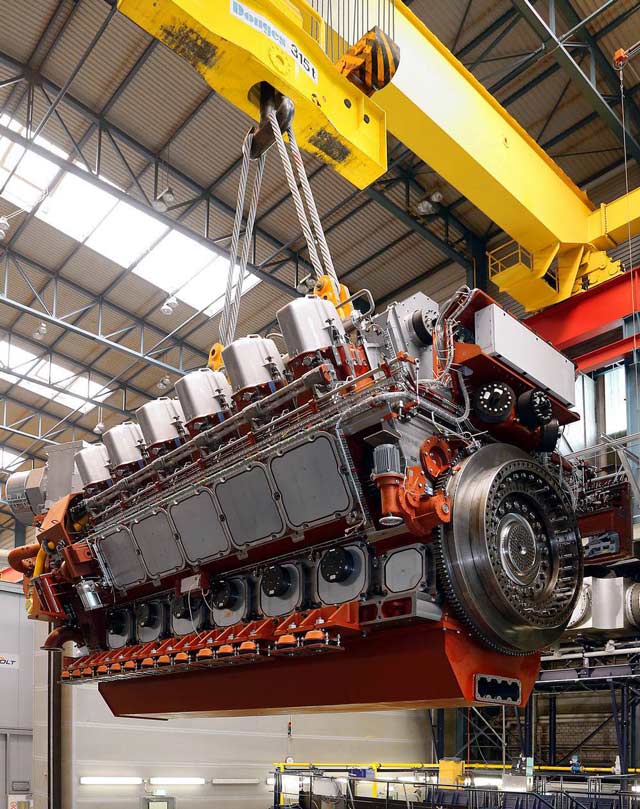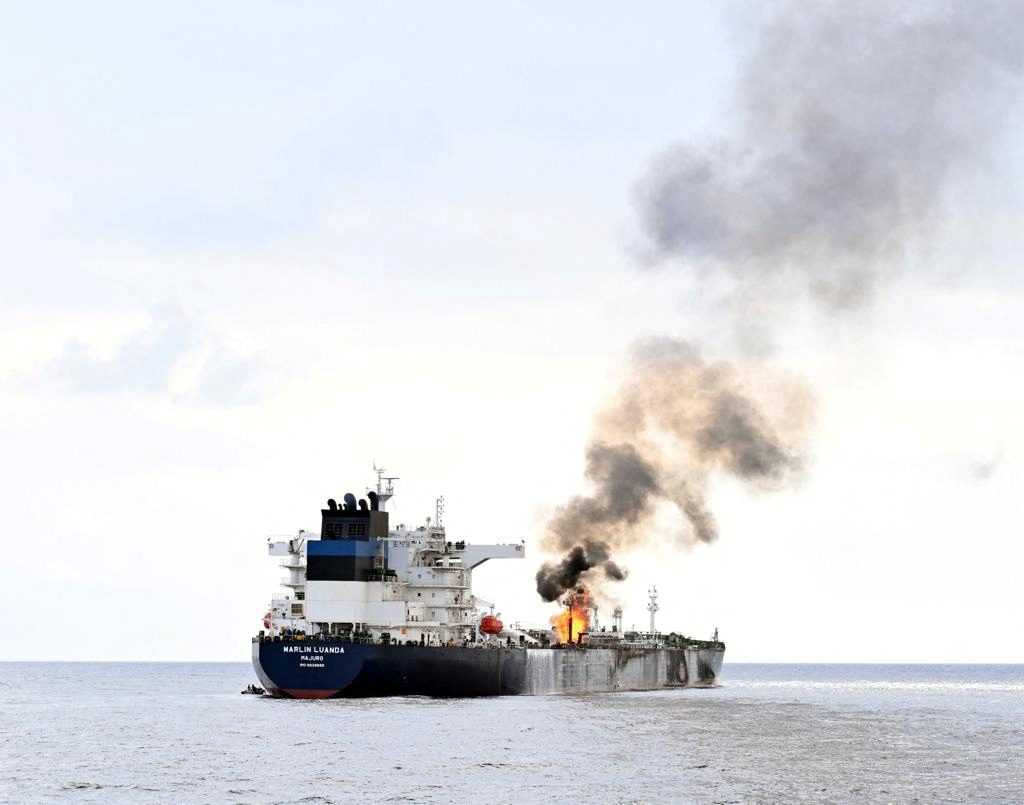MaK’s M 46 DF dual fuel marine engine
By Anna Shiryaevskaya
Sept. 29 (Bloomberg) — Liquefied natural gas will gain a “significant” market share in the transport sector by 2035, the International Center for Natural Gas Information said.
Demand from road transport, such as trucks, will lead the expansion, followed by the use of LNG in ships and trains, Cedigaz, as the Rueil Malmaison, France-based association with 100 members in 40 countries is known, said today in a report. The price gap between diesel and LNG will drive the use of the super-chilled fuel in trucks, while environmental legislation may help make LNG more attractive for the marine sector.
“The cost advantage of LNG relative to diesel currently provides a strong economic incentive in the trucking industry,” the report said.
Global demand for LNG in road transport is estimated at 45 million metric tons a year in 2025 and 96 million tons in 2035 from almost zero in 2010. Demand for LNG as a marine bunker fuel will rise to 35.7 million tons in 2025 and 77 million in 2035. Use of the fuel in rail may expand from 0.9 million tons in 2025 to 6.2 million in 2035, primarily in the U.S, China and India, the report said.
China, which already has infrastructure in place, will represent almost half of the market for the use of LNG in trucks, according to the report.
“With at least 100,000 LNG vehicles and 1,100 refueling stations at the end of 2013, China already has a head start over the rest of the world in this nascent market,” the report said. “However, gas price reform in China may slow LNG growth there. LNG should also carve out a significant market share in the US, Europe and the rest of Asia.”
Bunker Fuel
The use of LNG as a marine bunker fuel will be driven by emissions regulations, which mean ship operators have to switch to more expensive oil-based fuels, implement costly flue gas treatment technologies or switch to LNG, the report said.
From Jan. 1, 2015, all vessels operating in the Baltic Sea and North Sea, including the English Channel, will have to use fuels with a maximum sulfur content of 0.1 percent, according to the European Maritime Safety Agency.
“However, the development of LNG as a transport fuel faces a number of challenges, and will have to go hand in hand with the development of fueling infrastructure,” Cedigaz said.
Copyright 2014 Bloomberg.
Unlock Exclusive Insights Today!
Join the gCaptain Club for curated content, insider opinions, and vibrant community discussions.

 Join The Club
Join The Club













